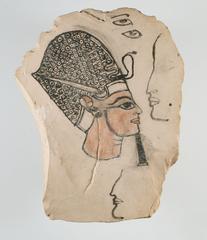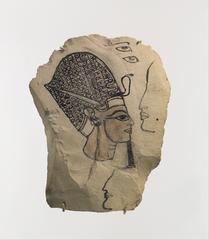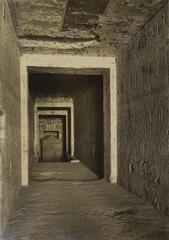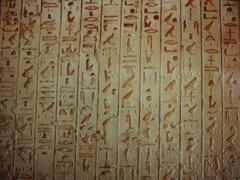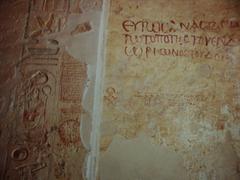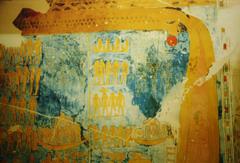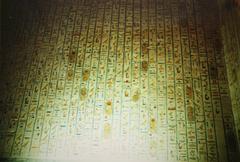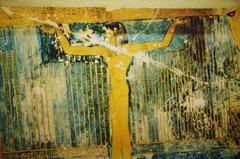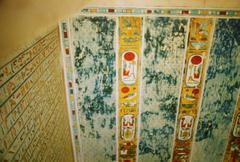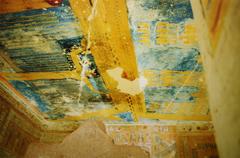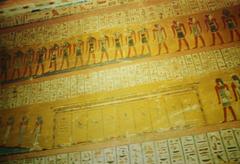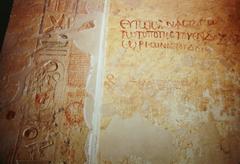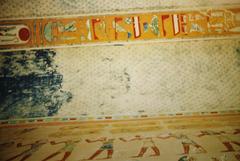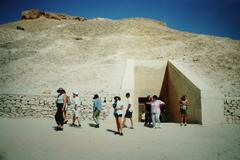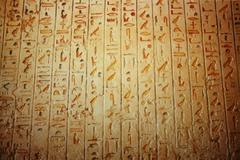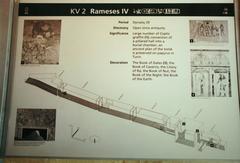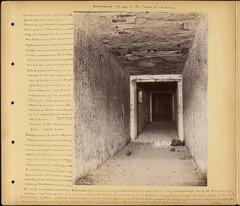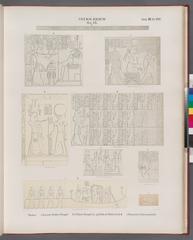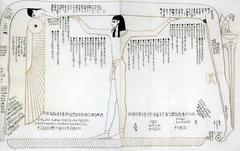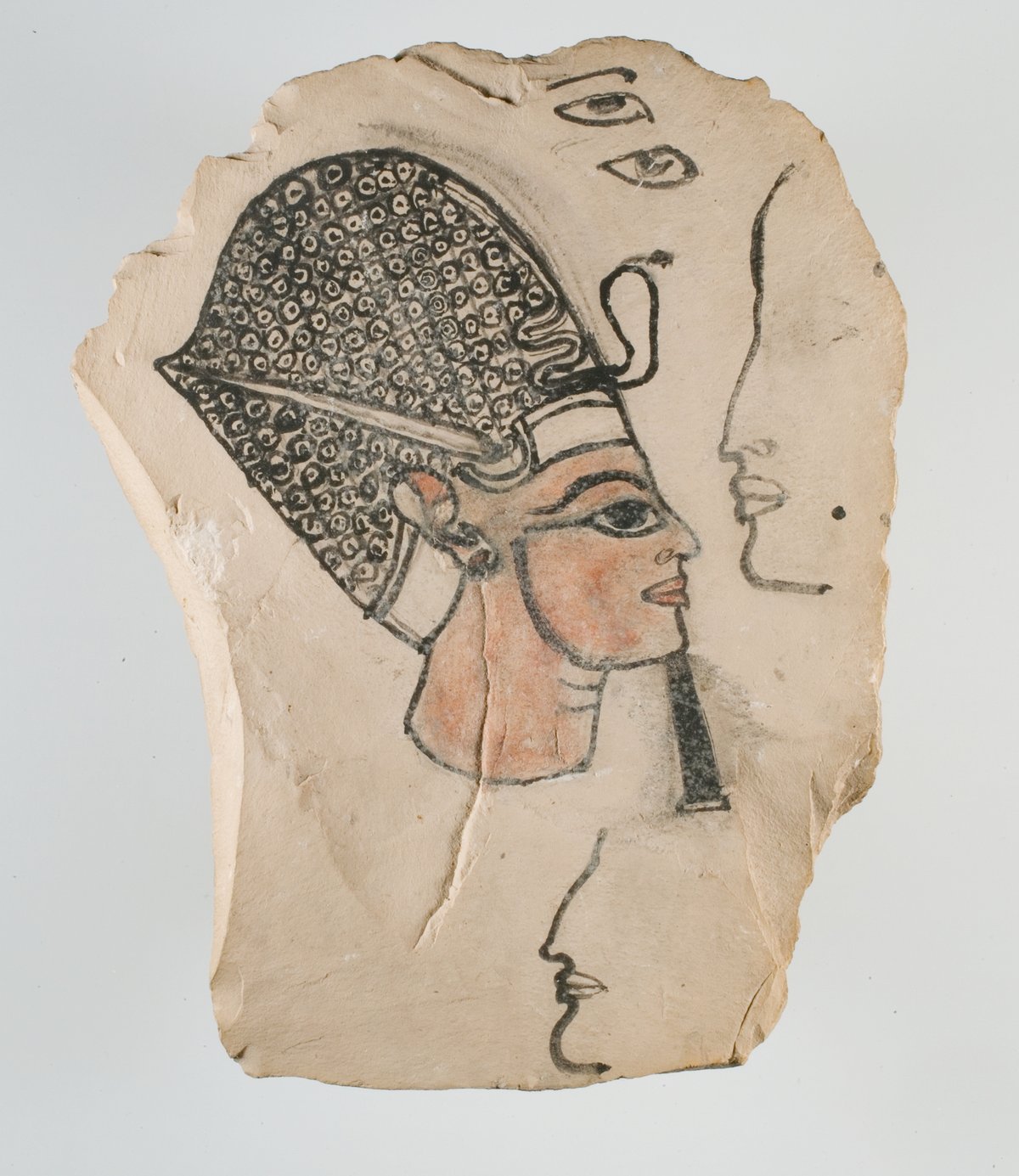
KV2 Tomb of Ramesses IV: Visiting Hours, Tickets, and Complete Travel Guide
Date: 14/06/2025
Introduction
Nestled within the legendary Valley of the Kings on Luxor’s west bank, KV2 is the final resting place of Pharaoh Ramesses IV, a ruler of Egypt’s Twentieth Dynasty. This tomb stands out not only for its vibrant wall paintings and religious texts, but also for its accessibility and significance in the narrative of New Kingdom Egypt. Visiting KV2 offers an immersive experience of ancient funerary architecture, art, and the dynamic history of the pharaohs (Ancient Society; Wikipedia).
This guide provides everything you need to plan your visit, including historical context, archaeological highlights, detailed visiting hours, ticketing information, accessibility tips, and recommendations for making the most of your trip to one of Luxor’s most captivating sites.
For official updates, consult the Egyptian Ministry of Tourism and Antiquities.
Table of Contents
- Introduction
- Historical Background of KV2
- Archaeological Discoveries & Artistic Features
- Practical Visitor Information
- Conservation, Community & Responsible Tourism
- Frequently Asked Questions (FAQ)
- Conclusion & Call to Action
- References
Historical Background of KV2
The Reign of Ramesses IV
Ramesses IV, who reigned circa 1156–1149 BCE, inherited the throne following the assassination of his father, Ramesses III, during a period of economic and political strife. Determined to assert his legitimacy, Ramesses IV initiated ambitious projects—including the construction of KV2 (Ancient Society).
To expedite the tomb’s construction, he doubled the workforce at Deir el-Medina to 120 artisans. As a result, KV2 is notably spacious yet less complex than earlier royal tombs, reflecting both urgency and practicality (Wikipedia).
Site Selection & Construction
KV2 is located on the northwest side of the main wadi, between KV7 (Ramesses II) and KV1 (Ramesses VII) (Ancient Society). Its straight-axis design, comprising three gently sloping corridors, an enlarged chamber, burial chamber, and side rooms, epitomizes Twentieth Dynasty royal tomb architecture (Madain Project).
The tomb stretches approximately 88.7 meters into the hillside (Wikipedia), and a surviving ancient plan—preserved on a papyrus in Turin—shows the layout at 1:28 scale, with labeled chambers and a depiction of the sarcophagus surrounded by shrines.
Decoration & Religious Significance
KV2’s walls are adorned with scenes from the Litany of Ra, Book of Caverns, Book of the Dead, Book of Gates, Book of Amduat, Book of Nut, Book of the Night, and Book of the Earth (Ancient Society). These texts and images were intended to guide and protect Ramesses IV on his journey through the underworld.
A particularly remarkable feature is the ceiling of the burial chamber, which displays the goddess Nut arched across the sky, symbolizing rebirth and divine protection (Madain Project).
Ancient Plans & Ritual Function
KV2 is unique in having preserved ancient architectural plans, including a detailed papyrus and a limestone slab at the entrance, likely used by workers. These surviving plans offer rare insights into both the design and consecration process of royal tombs (Wikipedia).
Archaeological Discoveries & Artistic Features
Excavations & Notable Finds
KV2 has been accessible since antiquity, attracting ancient Greek, Roman, and Coptic visitors, as evidenced by more than 650 pieces of graffiti on its walls (Madain Project). Systematic excavations by Edward Ayrton (1905) and Howard Carter (1920) uncovered funerary objects such as shabti figures and pottery, reflecting the craftsmanship of the era (The Not So Innocents Abroad).
The tomb’s long history as a shelter for explorers and later as a Coptic hermitage adds to its layered significance.
Architectural Layout
KV2’s straight-axis plan features:
- Three Descending Corridors: Lavishly decorated, these lead to the heart of the tomb.
- Enlarged Chamber: Originally intended as a pillared hall, repurposed as the burial chamber due to the pharaoh’s untimely death.
- Burial Chamber: Houses the granite sarcophagus, surrounded by detailed funerary scenes.
- Side Chambers: Three auxiliary rooms, possibly for storage of funerary goods (Egypt Tours Portal).
Wall Decorations & Symbolism
KV2’s decoration program includes:
- Litany of Ra: Invocations for rebirth through the sun god Ra.
- Book of Caverns and Amduat: Narrating the sun’s journey through the underworld.
- Book of the Dead: Spells for protection and resurrection.
- Book of Nut: Celestial motifs on the burial chamber’s ceiling, representing the goddess Nut and the cycle of rebirth (Egypt Mythology).
The tomb’s vibrant colors, intricate hieroglyphs, and depictions of deities such as Osiris and Anubis make it a masterpiece of New Kingdom funerary art.
Practical Visitor Information
Visiting Hours & Tickets
- Opening Hours: Generally open daily from 6:00 AM to 5:00 PM; hours may vary seasonally. Confirm via the official website.
- Tickets: Entry to KV2 is typically included in the Valley of the Kings’ main ticket (approx. 240 EGP as of 2024), with additional fees for photography permits (Intrepid Scout; Against the Compass). Tickets are available at the main entrance or via authorized online vendors.
Getting There
KV2 is easily accessible from Luxor’s west bank, about 7 km from the city center. Visitors can use taxis, organized tours, or local buses. The Valley of the Kings is well signposted, and KV2’s location makes it convenient for inclusion in broader itineraries (Against the Compass).
Accessibility
KV2 is among the more visitor-friendly tombs, featuring straight corridors and minimal stairs. While not fully wheelchair accessible, it is suitable for most visitors with limited mobility. Wear comfortable shoes and bring water, especially during summer (Trips in Egypt).
Guided Tours & Tips
- Guided Tours: Enhance your visit with a licensed Egyptologist guide, available at the ticket office or via tour operators.
- Best Time to Visit: Late afternoon (around 3:30 PM) is ideal for smaller crowds; mornings are popular but can be busy (Against the Compass).
- Photography: Mobile phone photography is allowed; professional cameras require a permit. Flash is strictly prohibited to protect the artwork.
Nearby Attractions
- Tomb of Tutankhamun (KV62)
- Temple of Hatshepsut
- Luxor Temple
- Karnak Temple
Conservation, Community & Responsible Tourism
Conservation Efforts
Ongoing work focuses on stabilizing the tomb’s structure, preserving wall paintings, and managing visitor numbers. International collaborations and UNESCO projects support sustainable site management and train local conservators (UNESCO).
Community Engagement
Educational workshops and community initiatives foster local stewardship and heritage appreciation. International teams contribute expertise and funding, supporting Egypt’s long-term preservation goals.
Responsible Tourism & Safety
- Respect Regulations: Do not touch wall surfaces or use flash photography.
- Support Local Economy: Hire local guides and purchase tickets through official channels.
- Stay Safe: Hydrate, use sun protection, and keep valuables secure. The Valley has on-site security and emergency services (Against the Compass).
Frequently Asked Questions (FAQ)
Q: What are the opening hours of KV2?
A: Generally 6:00 AM to 5:00 PM daily; check the latest times before your visit.
Q: How much are tickets to KV2?
A: Included in the main Valley of the Kings ticket (approx. 240 EGP as of 2024); additional photography permits may apply.
Q: Is KV2 suitable for visitors with mobility challenges?
A: Yes, KV2 is among the more accessible tombs, but uneven surfaces require caution.
Q: Can I take photos inside KV2?
A: Mobile phones are allowed; professional cameras require a permit. No flash photography.
Q: When is the best time to visit?
A: Late afternoon for fewer crowds; early morning is also possible but busier.
Conclusion & Call to Action
KV2, the tomb of Ramesses IV, offers a compelling journey into the artistry, beliefs, and history of ancient Egypt. Its vivid wall paintings, accessible layout, and unique historical layers make it a highlight of any Luxor itinerary. For the best experience, plan your visit with up-to-date information on tickets and tours, respect conservation guidelines, and engage with the local community.
Plan your visit today: Download the Audiala app for immersive audio tours, interactive maps, and the latest updates on KV2 and other Valley of the Kings sites. Follow us on social media for travel inspiration and expert tips.
Visual & Interactive Media Suggestions
- Include high-quality images of KV2’s entrance, decorated corridors, and the burial chamber ceiling featuring Nut.
- Use alt text such as “Entrance of tomb KV2, the burial site of Ramesses IV, Valley of the Kings” and “Wall paintings from the Book of Nut in KV2.”
- Add interactive maps highlighting KV2’s location within the Valley.
Internal Links
References
- ‘Visiting KV2 in the Valley of the Kings: History, Hours, Tickets, and Tips,’ 2024, Ancient Society (Ancient Society)
- ‘KV2,’ 2024, Wikipedia (Wikipedia)
- ‘Visiting KV2: Archaeological Discoveries, Artistic Features, and Essential Visitor Information for Ramesses IV’s Tomb,’ 2024, Madain Project (Madain Project)
- ‘The Tomb of Ramses IV in the Valley of the Kings,’ 2024, The Not So Innocents Abroad (The Not So Innocents Abroad)
- ‘The Tomb of Ramses IV: A Royal Burial with Hidden Treasures,’ 2024, Egypt Mythology (Egypt Mythology)
- ‘KV2 Visiting Hours, Tickets & Visitor Guide: Explore the Tomb of Ramses IV in Luxor,’ 2025, Against the Compass (Against the Compass)
- ‘Tomb of Ramses IV,’ 2025, Egyptatours (Egyptatours)
- ‘Best Tombs to Visit in the Valley of the Kings,’ 2025, Intrepid Scout (Intrepid Scout)
- ‘Tomb of Ramses IV,’ 2025, Trips in Egypt (Trips in Egypt)
- ‘Engaging Communities in Managing Tomb Amenhotep III, World Heritage Site Luxor,’ 2024, UNESCO (UNESCO)
